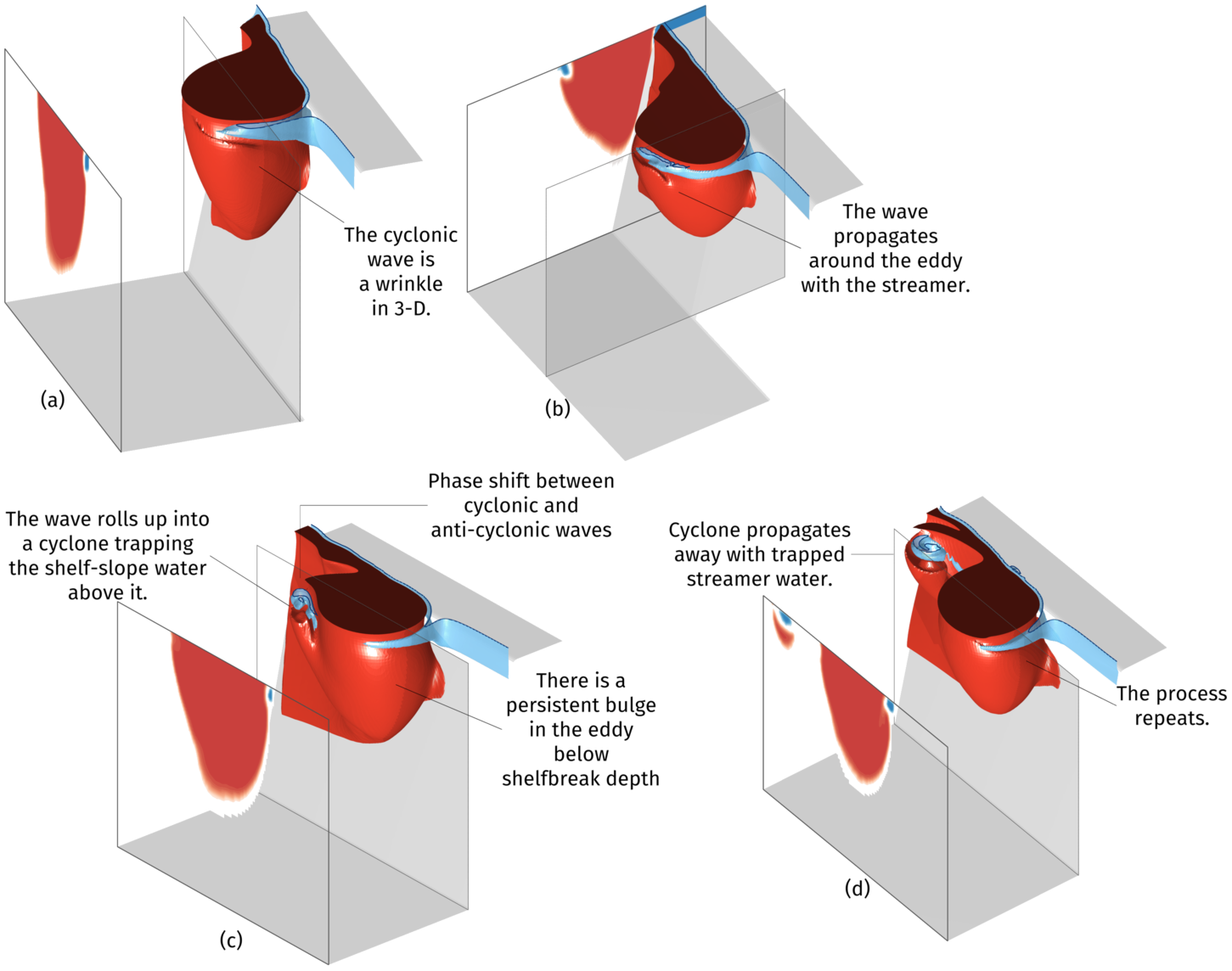When an eddy encounters shelf-slope topography
Advisor: Ken Brink (WHOI)
I studied the interaction of eddies with continental shelf-slope topography. I used the ROMS ocean model to simulate the interaction after distilling the elements of the problem down to an idealized setup.
The following video shows the evolution of a passive tracer initialized to the initial latitude location of a water parcel. The coast is at the southern boundary; and horizontal lines are isobaths. The time series is the cross-shelfbreak flux of shelf-water (defined as water parcels starting on the shelf at t = 0.)
The formation of stacked cyclones
As seen in the video, the interaction clearly results in the formation of smaller-scale secondary vortices. We term these 'stacked' vortices to reflect their (unexpected) vertical structure wherein shelf-slope water is stacked over eddy water.

Shelf flow field forced by eddies
